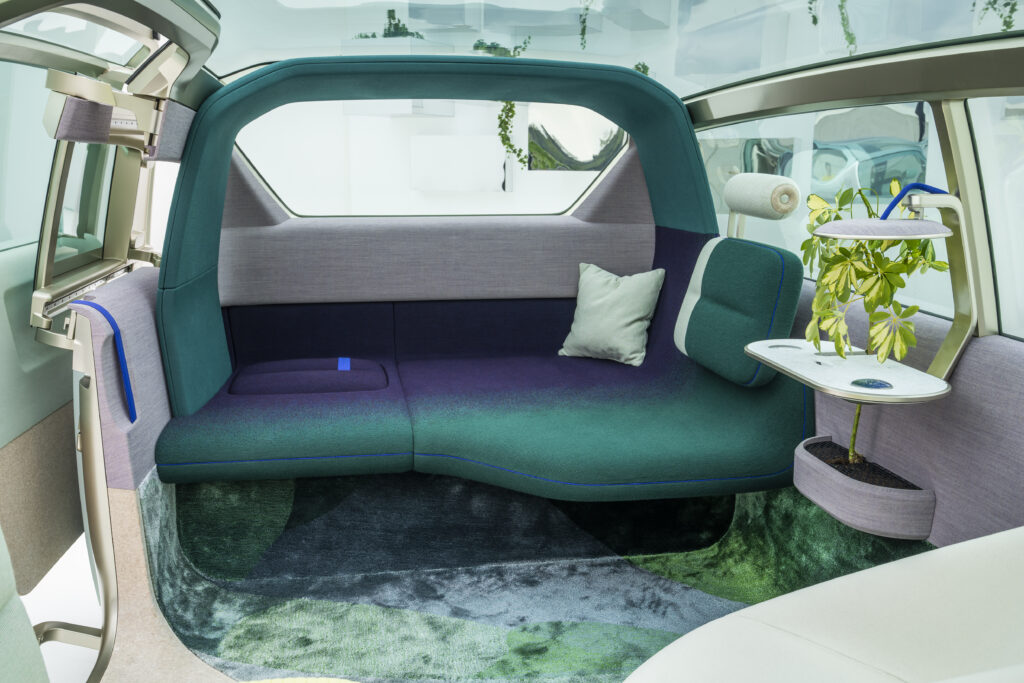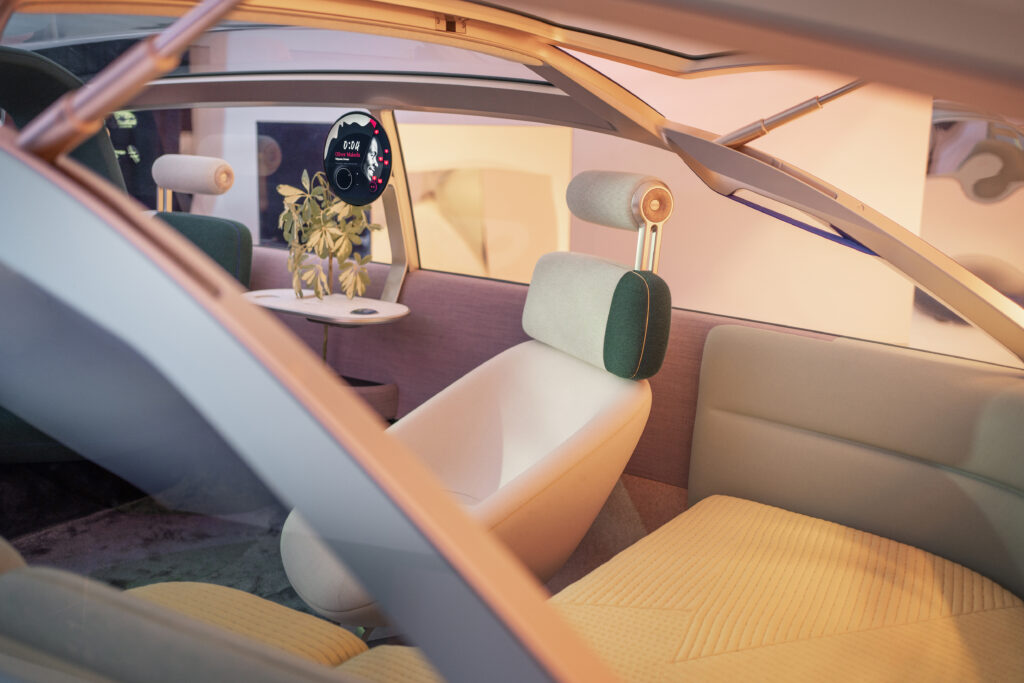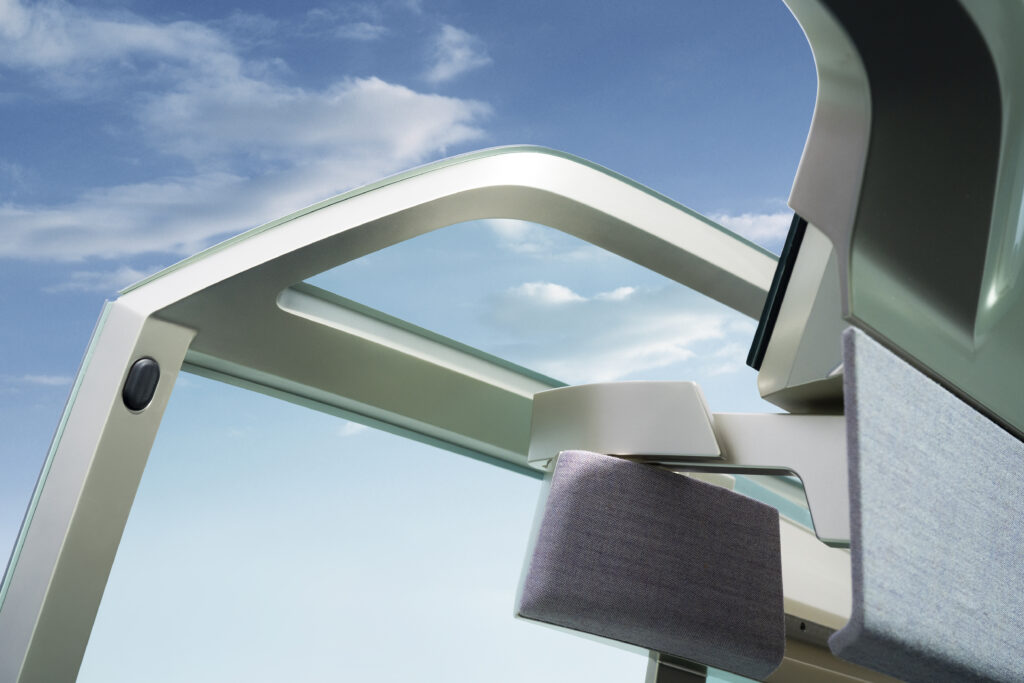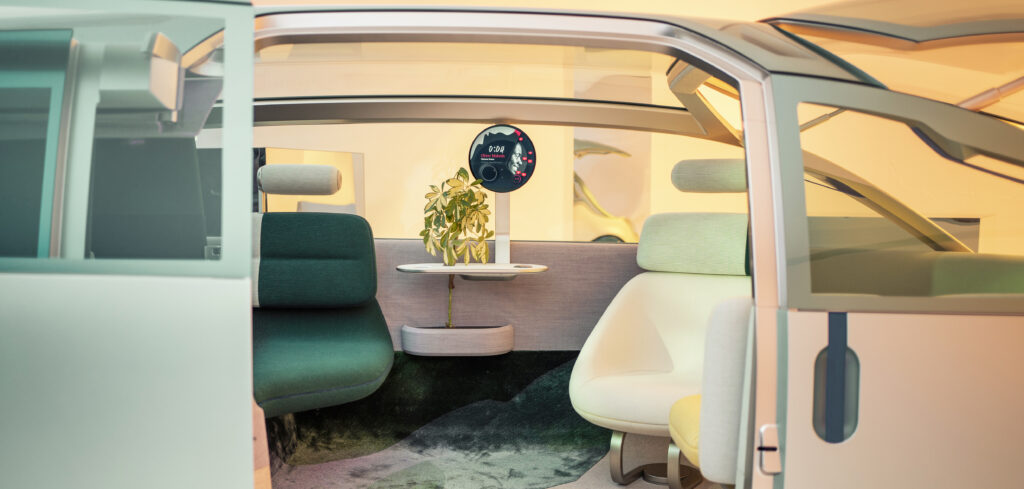In November 2020, the Mini brand revealed the Vision Urbanaut virtual concept vehicle, which it called an all-new interpretation of mobility through an innovative vision of space. Now, BMW has made a physical model of the vehicle, showcasing its space and sustainable materials.
“At Mini we see it as our responsibility to preserve and develop the unique characteristics of our brand over the upcoming years and those further ahead,” explained Bernd Körber, head of Mini. “With our eyes fixed on the future, we have developed an idea, with the Mini Vision Urbanaut, of how we can take the Mini attributes – as here, with the focus on the ‘Clever Use of Space’ – into the future of mobility and interpret them in a typically Mini way. It brings the user’s personal space into the car and opens up various possibilities for them, from creating an urban oasis to experiencing freedom in the ‘Wanderlust’ moment. The Mini Vision Urbanaut represents our image of how Mini’s ‘Clever Use of Space’ could provide an answer to the needs of future cities and lifestyles.”
Oliver Heilmer, head of Mini Design, added, “At Mini Design we believe that the best way to understand the overall concept behind the Mini Vision Urbanaut is to experience it. The feeling of space and the innovative materials are just asking to be explored. That is why it was very important for us from the outset to also make a physical model of the Mini Vision Urbanaut. And now that moment has come. We have planned and built every aspect of the model – which allows people to experience all of the facets of the Mini Vision Urbanaut – at our Mini Design Studio in Munich.”
According to BMW, the exterior and interior of the vehicle change to reflect the Mini moment at hand and so give the onboard experience the best possible stage and environment. Fragrance, sound and ambient lighting continue to enrich the baseline mood initiated by the chosen Mini moment – features that the physical model of the Urbanaut will be able to demonstrate.
For example, the Chill moment invites occupants to catch a breath. The car becomes a kind of retreat, a haven where they can relax or work with full concentration. While the rear seat bench (Cosy Corner) invites various seating and lying positions, the backlit Loop above it takes on an appearance inspired by a green forest canopy and can also be dimmed. In the central area, the circular instrument folds down to become a table lamp, eliminating displays or switches that might remind customers of their automotive surroundings.

BMW states that the Urbanaut also focuses on sustainability, and the design sets out to use resources responsibly. From the beginning of the concept phase, BMW says it focused on consistently reducing the number of components and avoiding unnecessary use of materials. This has been achieved by developments including dual functionality for the dashboard (it can turn into a daybed) and the debut appearance of a circular OLED center display – which recasts itself as a stylish lamp in the Chill moment – above the table. Maximizing length of use by ensuring materials can be replaced is likewise a priority. Changeable covers are a good example of how this can be achieved. In addition, the interior has been created without the use of chrome or leather, an approach that will also be rolled out in the next Mini model generation.
The interior of the Urbanaut features a high proportion of recycled materials that are almost exclusively renewable and recyclable. Dominant in the interior are textiles made from recycled materials (including wool, polyester and Tencel) and the designers also paid extra attention to solutions composed of a single type of material – known as ‘mono-materials’. These are easy to recycle further down the line and can be turned into new products. The use of renewable and recyclable cork on the steering wheel and sections of the floor adds a special touch thanks to its natural feel.

BMW says that a key element of the interior design is a carefully honed approach to fragrance and sound. “The holistic approach addressing all the senses creates a truly unique and unforgettable experience,” explained Annabelle Coffinet, fragrance designer at the BMW Group. “A distinctive fragrance signature sticks in the mind and can remind you of a positive atmosphere and overall experience. In this way, we are creating another, very personal, connection with particularly memorable times. We also wanted to link the Mini brand identity with a fragrance signature for the first time. This hint of something intangible, refreshing and unexpected brings emotion to how the brand’s message is communicated, a kind of highly recognizable international signature. It will be discreet and revealed as part of a welcome scenario.”
Another aim for BMW’s designers was to use digital integration to intensify or enrich the analog experience. This ‘analog love, digital connection’ approach runs throughout the vehicle. To this end, an additional digital level has been integrated below several of the analog surfaces. Examples here include the table inside the vehicle (which initiates the Mini moments when the Mini Token is placed in one of the slots), the lamp with OLED display and the LED matrixes in the interior under a layer of textile or in the front and rear ends of the car.
According to BMW, its designers created the spacious interior experience before developing the exterior, using floor plans, pieces of furniture plus wooden scale models to indicate size. During the project, augmented reality was employed to create a digital model, which was then systematically optimized. The physical model was then put together from start to finish at the Mini design studio in Munich. The company highlights that every part has been specially designed, precision-manufactured using cutting-edge tools and crafted by hand. The construction of the model therefore extended from a classical vehicle build via furniture-making all the way to programming and smart high-tech integration.




